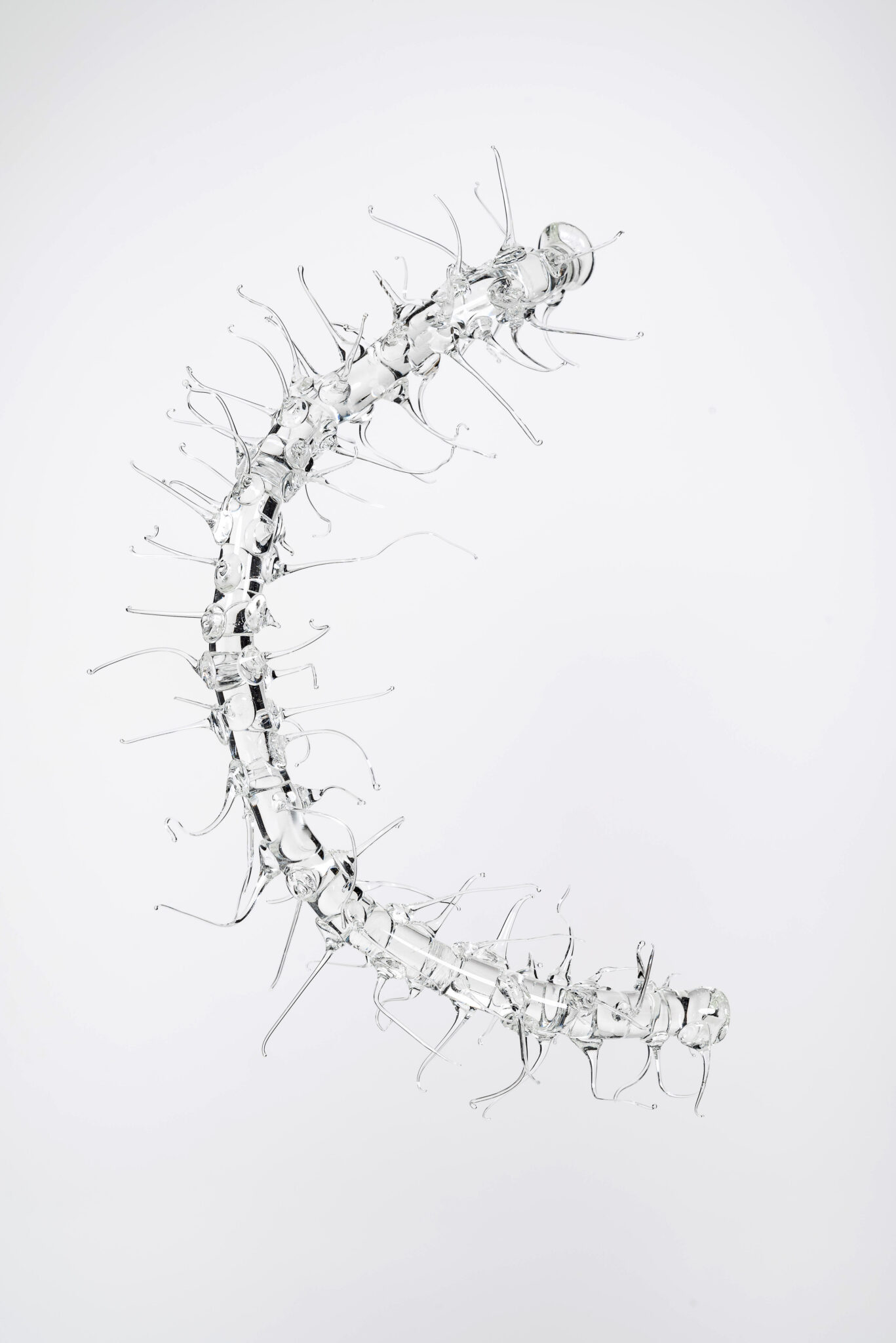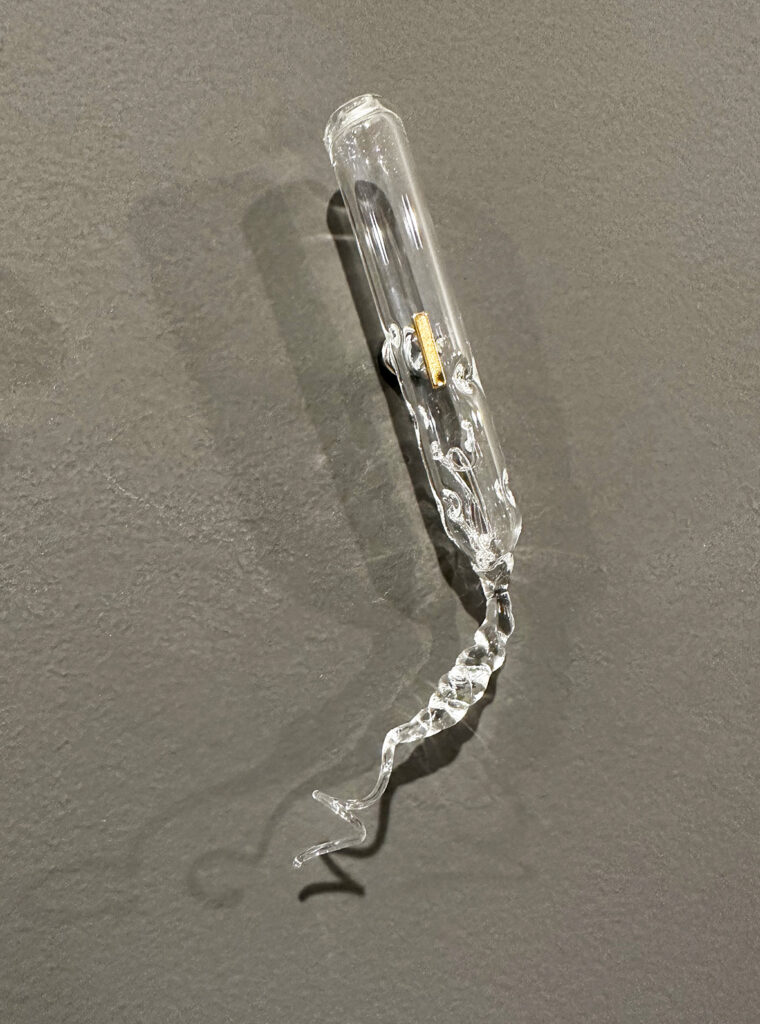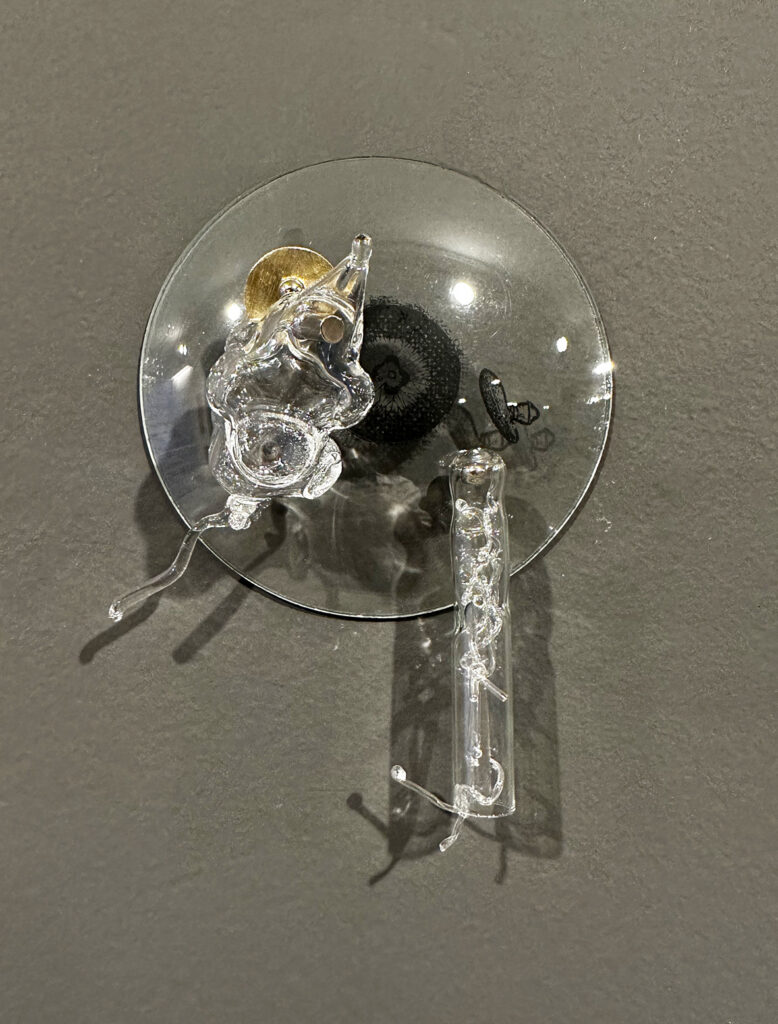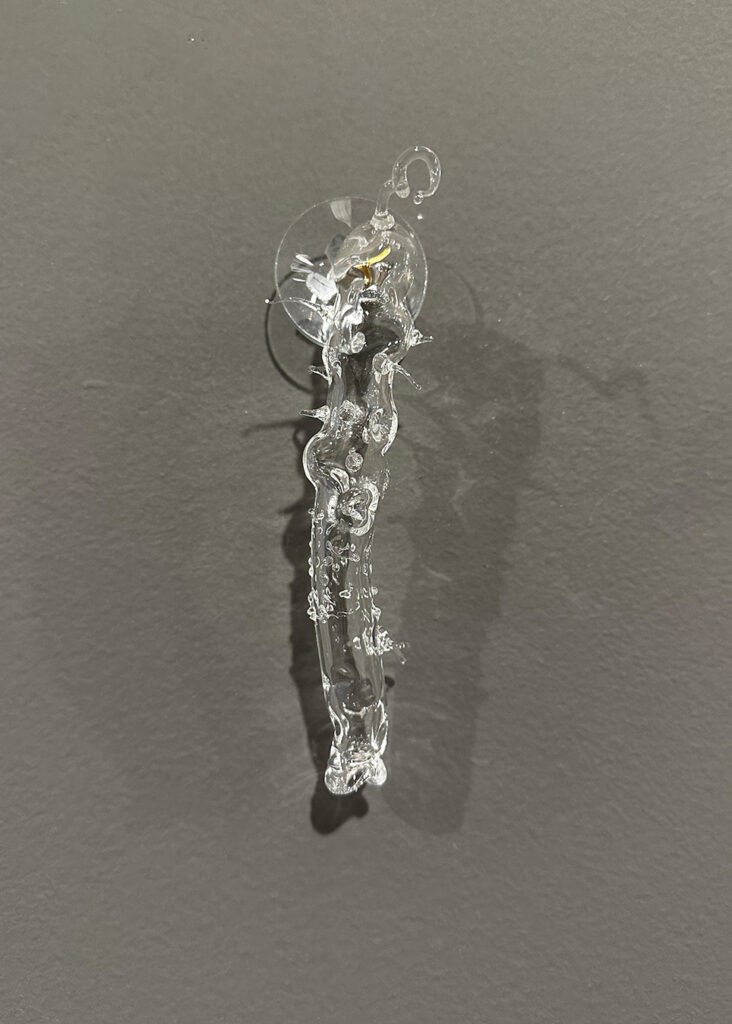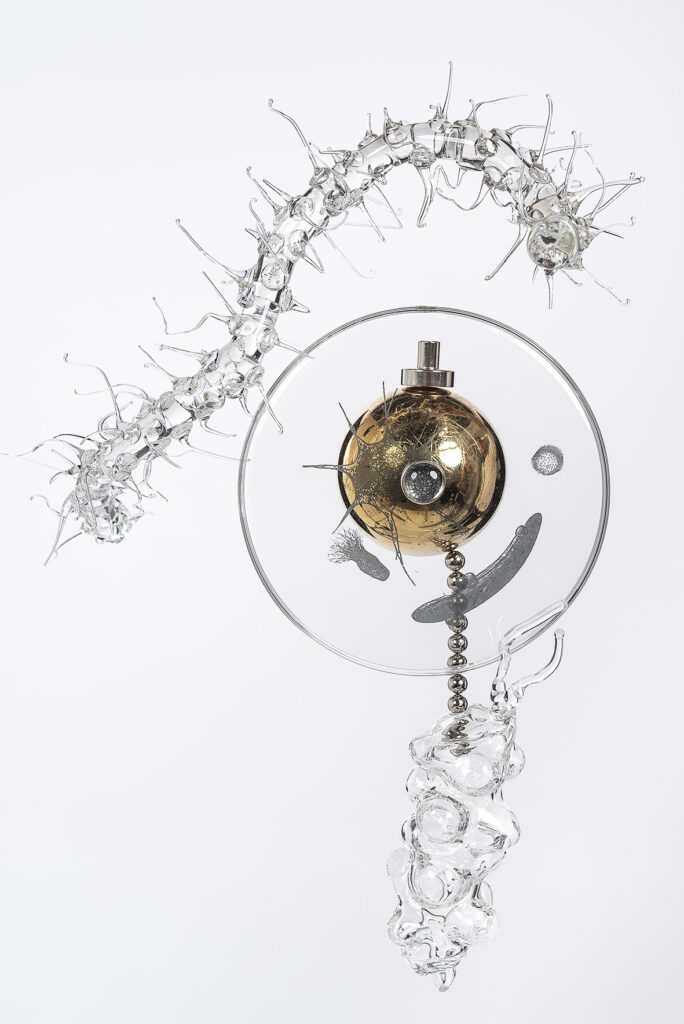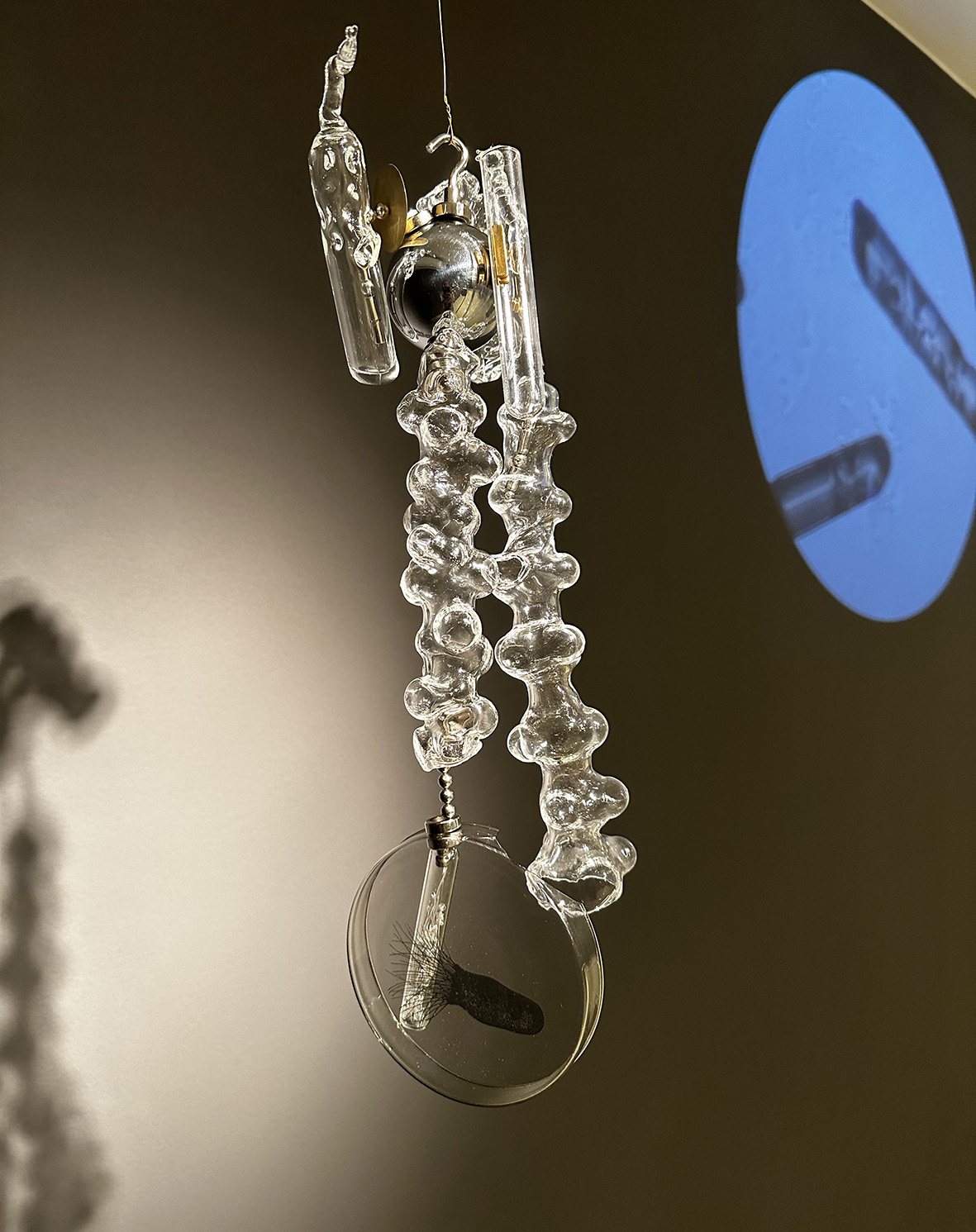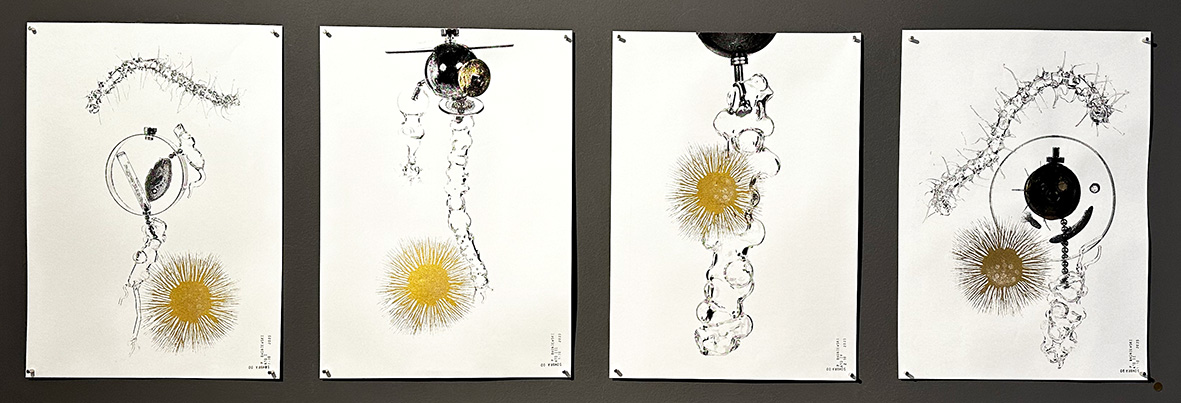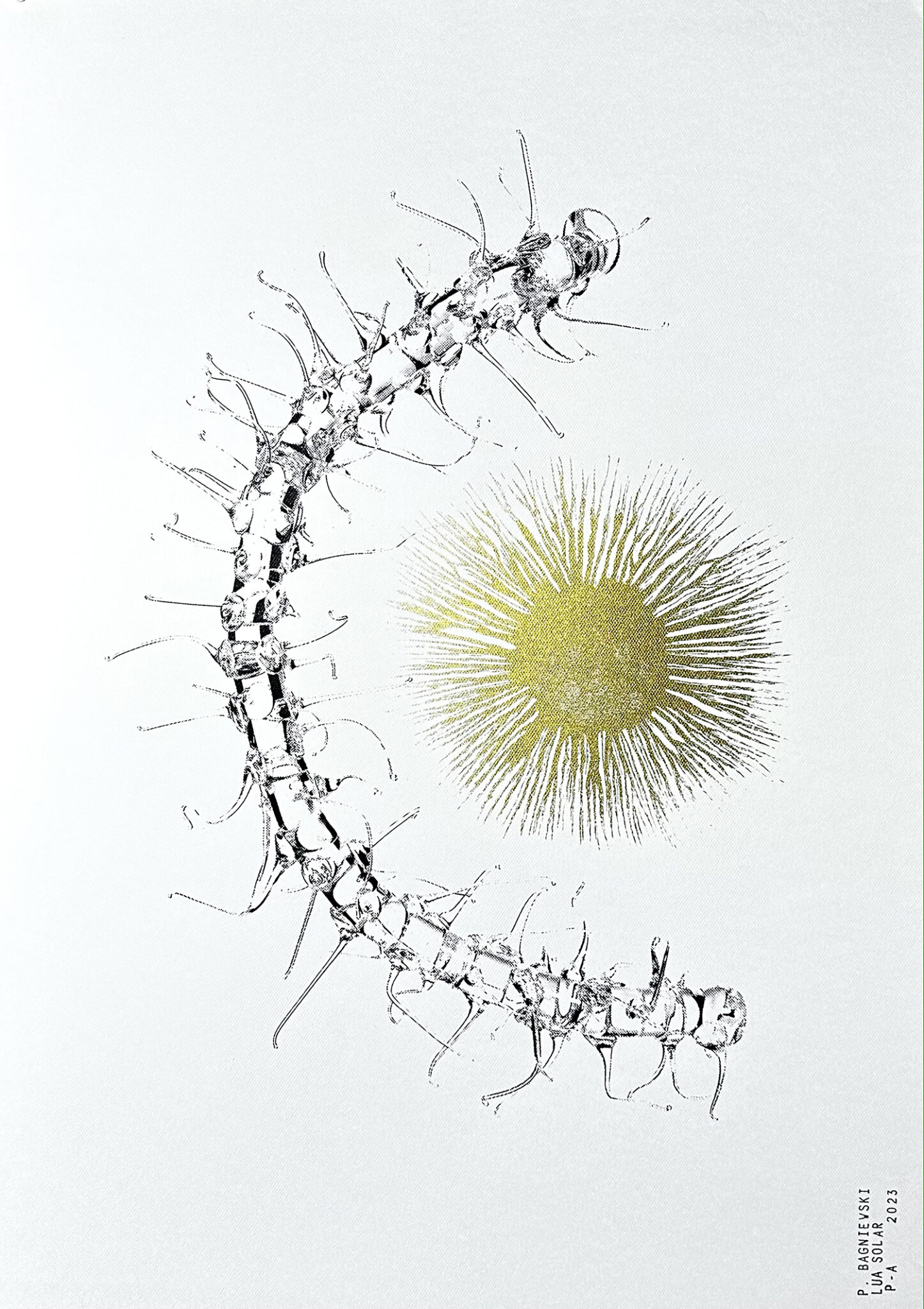What is below is like what is above
what is above is like what is below

This is an exhibition that results from research into the poetic possibilities of this mysterious material that is glass. A matter that hides in its almost invisibility…, but is palpable. Made from the transformation of silica (sand, volcanic lava...) by heat and rapid cooling. Transparency, hardness, impermeability and… fragility. Its discovery dates back thousands of years and emulates the alchemical practice of material transfiguration.
Patrícia Bagniewski chose glass as the support and material for her artistic research. She sought to learn the magic of transformation (in London, Japan or on the glass island, Murano, in Venice, where she visited several times). She searched for its history and its symbolism. She sought science and its surprising findings, such as the discovery of diatoms, organisms that are half organic (unicellular algae), half inorganic (crystals), or the microscopic structure of sand (a material that is linked to the version of the discovery of glass). She turned to the analytical psychology of Carl Gustav Jung and the history of alchemy, where she met the philosopher Hermes Trismegistus, whose second hermetic law, that of correspondence, gives the exhibition its name...
From glass, from its transparency, Patrícia made a series of unusual banal objects that, in a subversion, began to occupy velvet cushions, unlikely jewels. She also created beautiful landscapes. She did experiments. Among the ‘objects’ appeared the crown of Christ in transparent glass, reproducing part of the stem of that common bush, with small red flowers, used as a hedge. And with it comes the unavoidable reference to our religiosity through Christianity.
The common object, in the artist's approach, triggers thought about the symbology hidden in popular naming... and from there emerges the set of works we see now.
The Installation Sublimation/Coagulation, where the glass hand (which was modeled on the artist's own) addresses the circularity of the metal and the translucency of the plant, representing at the same time a composite object and an action. The elements are found inside a dome, separated from the world. Starting from this object, spreads the series of circular mirrors that have engraved, on their surface, the shadows produced by the small thorny stems, all placed on the wall. By reflection, we are captured into the work. In front of you, suspended, are some glass pieces of the crown of Christ that are repeated reflected in the mirrors and project their shadow over the whole. The repetition of the symbolic piece functions as a punctuation of the work's narrative. Establish a rhythm for your reading.
The mirrors receive a version of Primordial Soup (around creation through the lens of science), conceived by Patrícia, associated here, by proximity and mirroring, with the Christian symbol (paradoxically).
The 30 Petris exposed have, as a base, the homonymous plates, so common in the laboratory as transparent bases that receive the material to be revealed by the microscope. Compositions of glass and metal joined by magnets (mini assemblies of possible delirious mechanisms) have an organization, on the wall, that in a way creates a sentence (perhaps echoing the aphorisms of Trismegistus).
The three ACTSwhich become four, based on the artist's performance, at the opening of the exhibition, (and which remains established throughout the exhibition), are her newest research. The works are composed of an intricate association of petri dishes + brass plates and wires + irregular glass shapes, with a structure similar to that of spines, both created from heated and beautifully deformed cylinders/pipettes. This is all supported by magnets and wires, unstable, potentially changeable, moving because they are loose in space and completed by the shadow drawings that they project on the wall... ghostly.
Next to the space intended for performance, there is a void only filled by the projection of a circular video (how can we not associate it with the experience of super amplified microscopic research?). In this void and in the shadows, it is almost a moon. But a moon like that of Bertold Brecht that appears in the cathartic absorption of the scene as an instance of reality… There where we are.
Three engravings complete the exhibition. Three two-dimensional representations of the shadow of ACTS.
After all, isn’t light and shadow what constitutes this exhibition?
Marilia Panitz, curator
